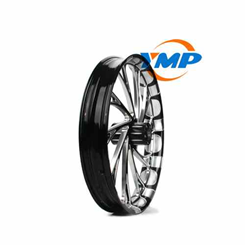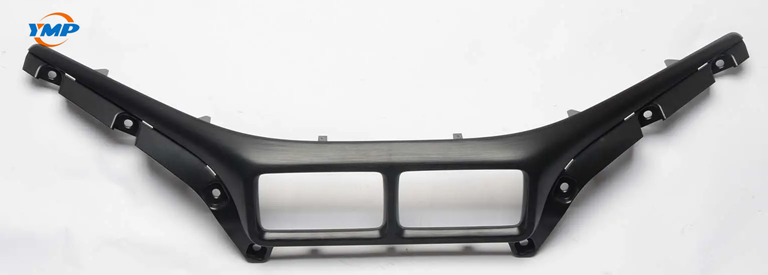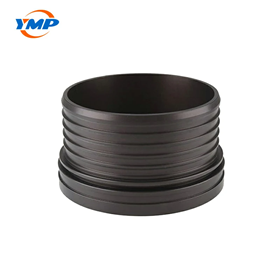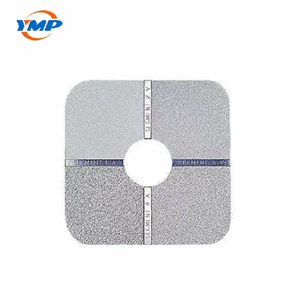Auto parts are an important part of a car, including engines, chassis, bodywork, electrical equipment, etc. The materials and surface treatment methods of these parts will directly and indirectly affect the performance and life of the car.
1. Main materials of automobile parts
A-metal material
Metal materials are the most widely used materials in automobile parts.
Among them, steel, cast iron, copper alloy, aluminum alloy and magnesium alloy are the main metal materials for automobile parts. Steel has the advantages of high strength, good corrosion resistance, and low cost, so it is widely used in automobile bodies, fenders, chassis, engines, etc. Aluminum alloys and magnesium alloys have many advantages such as light weight, good corrosion resistance, and good thermal conductivity. They are mainly used in automobile bodies, wheels, engines, etc., which can reduce the weight of the automobile to a certain extent. Copper alloy materials have good corrosion and wear resistance and are generally used to manufacture components such as radiators.

B-Non-metallic materials
Non-metallic materials mainly include plastics, rubber, ceramics, glass, fabrics, etc.
1-Plastic materials have the advantages of light weight, easy processing, and low cost. ABS, PC, PP, PE and other commonly used plastic materials are mostly used in automobile interior parts, instrument panels, electrical devices, etc. They are not only light in weight, but can also reduce the noise and vibration of automobile parts. In addition, there are some special high-temperature and abrasion-resistant plastic materials that can be used in the production and processing of engine oil pans, turbine blades and other components.

2-Rubber and plastic are the most commonly used non-metallic materials in automobile parts. Rubber materials have the advantages of high elasticity and wear resistance, good plastic insulation, good sealing, etc., so they can usually effectively alleviate the vibration and noise of the car during driving. It is mostly used in the manufacture of automobile tires, seals, automobile shock absorbers, etc.
3-There are many types of glass used in cars. Common ones include front windshield, side window glass, rearview mirror glass, etc. Glass has the advantages of strong visibility and a certain degree of hardness, which can provide a better visual environment for people in the car. Even some special glass with special functions can protect the safety of people in the car to a certain extent. For example, glass with functions such as heat insulation, sound insulation, and anti-pinch are widely used in every corner of the car.
4-Ceramics have the advantages of high hardness, good wear resistance, and good chemical stability. Mainly used in automobile engines, braking systems and other parts.
5-Fabric materials have a small number of applications in automobiles, such as seats, door interior panels, etc. The fabric material has good waterproofness and softness, and can meet the needs of people in the car for sitting and leaning.

In the CNC machining industry, the materials used in automobile parts are mainly stainless steel, aluminum and aluminum alloy materials, plastic materials, etc. These materials often involve surface treatment of parts.
Let’s follow the editor to take a look at the common surface treatment methods for automobile parts processing.

2. Surface treatment methods of automobile parts
A-Painting treatment
Painting treatment is one of the most common methods of surface treatment for automotive parts. Coating treatment has the advantages of anti-corrosion, beautiful appearance, and improved surface hardness. During the painting process, the surface of the parts is first pre-treated, including oil removal, rust removal, phosphating and other processes, and then spraying, painting and other operations are carried out. ’ Common coating materials include silicon, tungsten, titanium, etc.
B-Oxidation treatment
Oxidation treatment is to form an oxide film on the surface of target auto parts through oxidation reaction to enhance the corrosion resistance and aesthetics of the parts. The oxidation reaction mainly includes anodic oxidation and cathodic anodization.
C-Electroplating treatment
Electroplating is a method of forming a metal coating on a metal surface. Through anti-corrosion, anti-rust, beautification, hardness enhancement and other methods to improve the performance and quality of auto parts, the finished auto parts will have better wear resistance, conductivity and more exquisite appearance. During the electroplating process, the metal surface is first pre-treated, then the electroplating reaction is performed, and finally the required metal coating is obtained. Electroplating mainly includes chromium, nickel, zinc, etc. The specific electroplating method can be customized according to the actual needs of customers.
D-Shot peening
Shot peening is a method of using high-speed airflow to spray projectiles onto the surface of parts to form a reinforced layer. This method can improve the hardness and fatigue resistance of the part surface. During the shot peening process, the material of the projectile and the injection speed have a great influence on the strengthening effect of the part surface.
E-Laser treatment
Laser processing is a method that uses high-energy laser beams to rapidly heat or cool the surface of a part. This method can improve the hardness, wear resistance and fatigue resistance of the part surface. During laser processing, the power and scanning speed of the laser beam have a great impact on the processing effect of the part surface.
F-Pickling treatment
Pickling is a method of removing oxides and other impurities on the surface of auto parts by soaking and stirring hydrochloric acid, sulfuric acid, phosphonic acid and other specific pickling methods.
G-Plasma treatment
Plasma surface treatment is used in many processes, such as coating and pretreatment before electroplating mentioned above.
To sum up, the materials and surface treatment methods of automobile parts have a vital impact on the performance and life of the automobile. In the automobile manufacturing process, appropriate materials and surface treatment methods should be selected according to the different use occasions and performance requirements of the parts.
Yixin Precision Metal & Plastic Ltd has nearly 20 years of professional mechanical processing experience. It is committed to automobile modification parts, photography equipment, medical equipment, transportation and other industries, and can provide customers with professional customized processing services. Everyone is welcome to conduct on-site factory inspections.